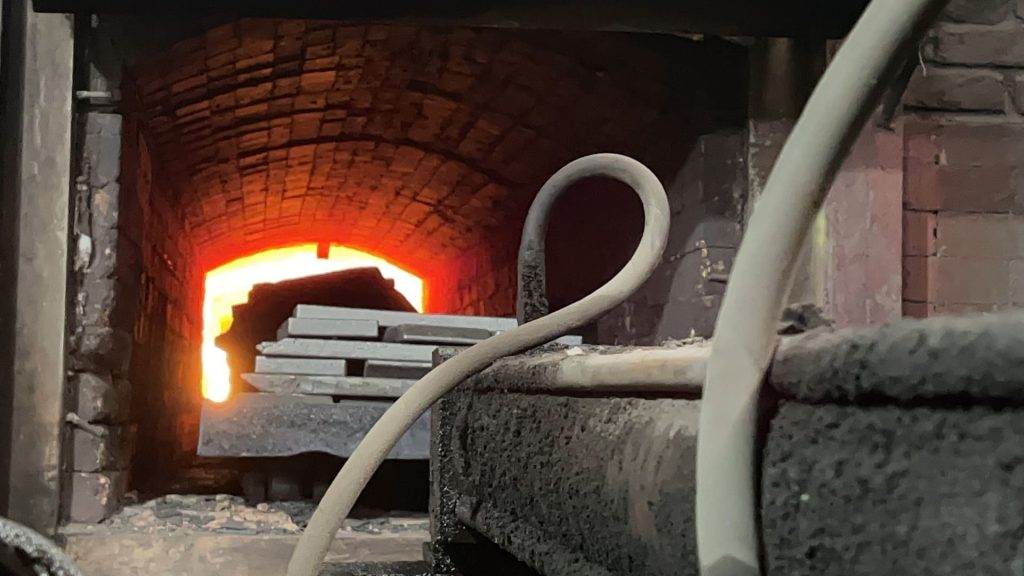
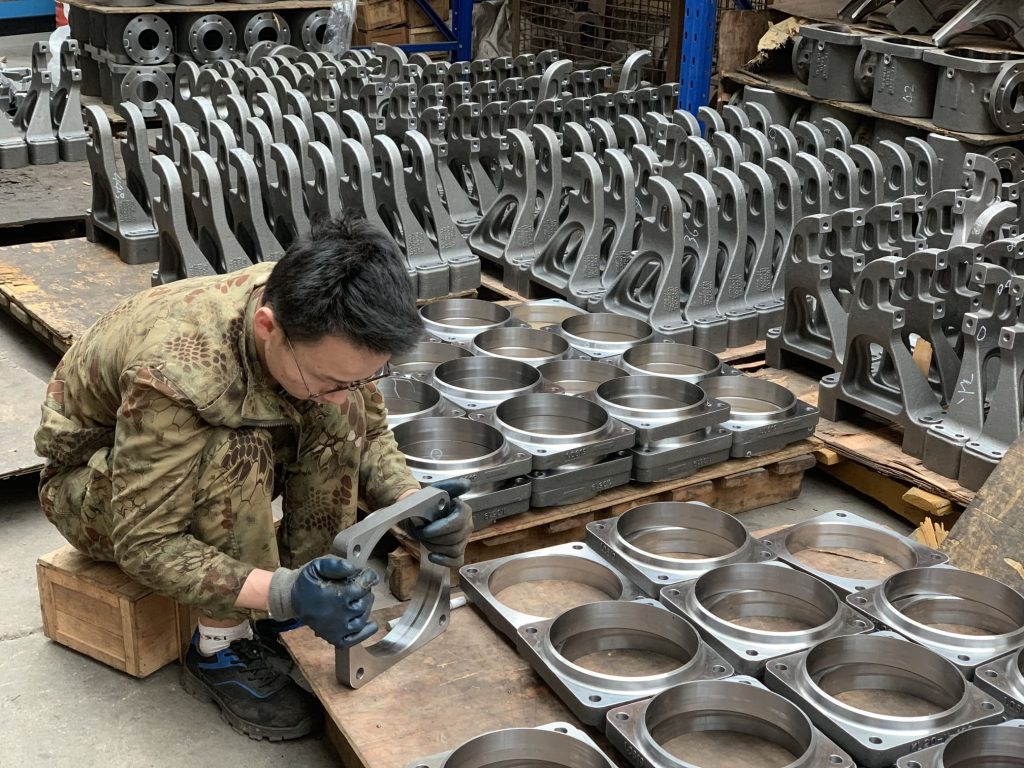
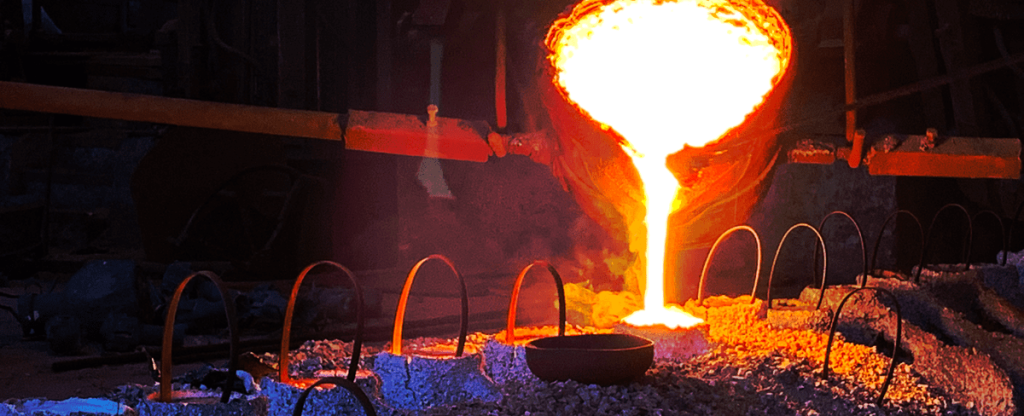
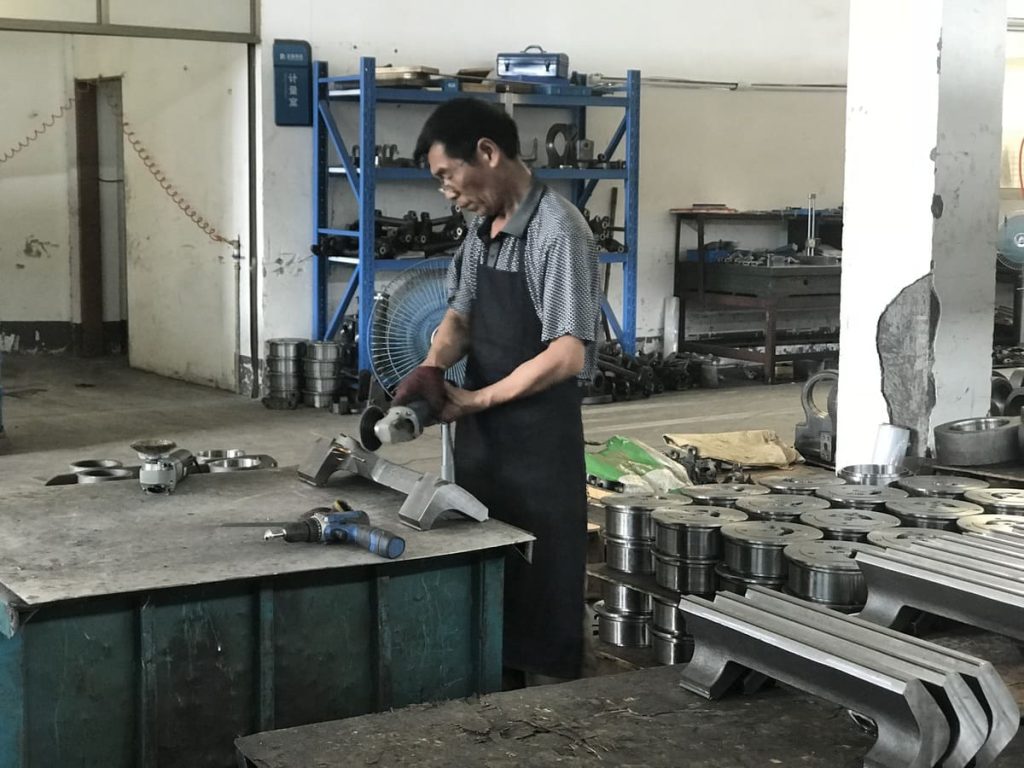
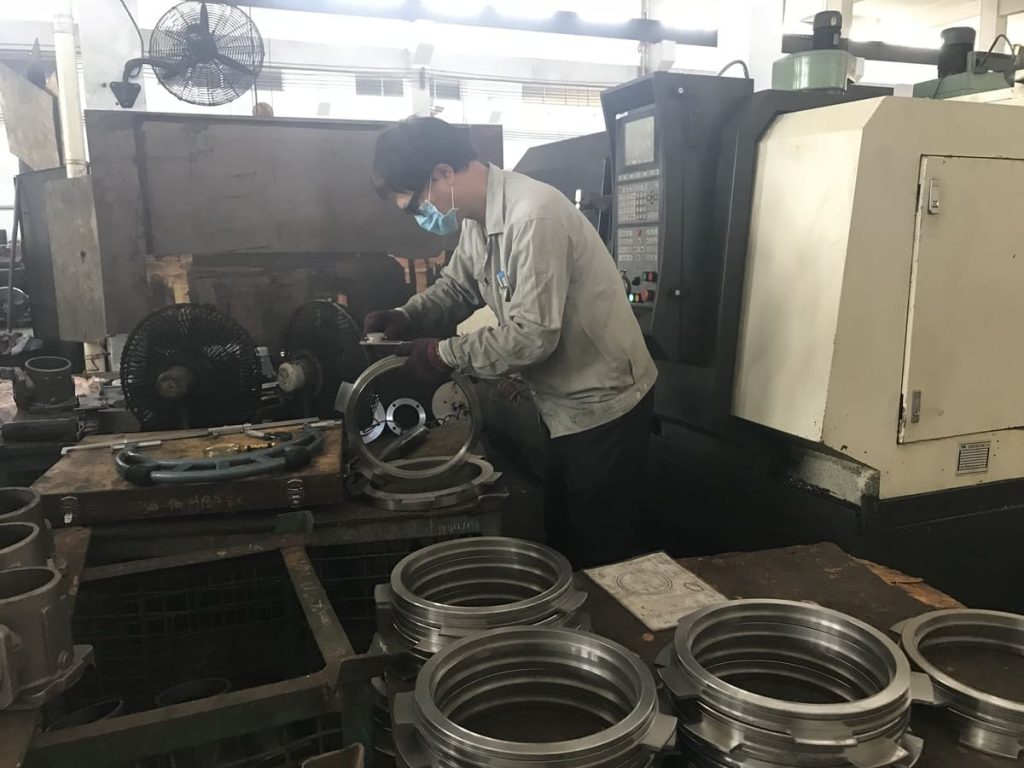
Process of Casting Steel
Design: In the steel casting process, the first stage is to make a pattern that exactly matches the finished product. To allow for shrinkage during the chilling process, the design is typically a little bigger than the finished result.
Materials: Depending on the intricacy and tolerance needs of the finished casting, patterns can be manufactured from various materials, such as metal, plastic, or wood.
Accuracy: Since errors will be carried over into the final casting, the pattern must be created with extreme precision.
Material Choice: Usually, a refractory material that can tolerate the high temperatures of molten steel is used to make the mould.
Cavity Creation: Using the template, a mould cavity with the precise shape of the finished object is made.
Core Assembly: A core composed of sand or another material may be placed into the mould if the finished product has intricate geometries or internal voids.
Melting: Steel scrap is dissolved in a furnace with any necessary alloying materials. To guarantee that the steel has the required composition and qualities, the temperature of the melt is carefully regulated.
Alloying: To create the appropriate alloy composition, more elements can be added to the melt.
Ladle: After the steel has melted, it is transferred to a spoon and poured into the mould.
Control: To avoid turbulence, which can result in flaws in the finished casting, the pouring process needs to be closely monitored.
Cooling: The casting is allowed to cool after solidification. Directional Solidification: The mould encourages directional solidification, with the steel solidifying controlled to eliminate faults. The velocity of cooling can impact the ultimate microstructure and characteristics of the steel.
Cutting: The finished item is separated from any gates or risers utilised during the casting process.
Cleaning: To get rid of any last bits of scale or mould debris, the casting is cleaned. Numerous techniques, such as grinding, sandblasting, or chemical cleaning, might be used to accomplish this.
Inspection: To make sure the casting satisfies the requirements and to check for flaws, it is inspected. This may include non-destructive testing techniques like ultrasound or X-rays and visual inspection.
Goal: Heat treatment improves the mechanical qualities of steel, including its hardness and strength.
Processes: Depending on the finished part’s required qualities, various heat treatment techniques, such as annealing, quenching, and tempering, can be employed.
Machining: To obtain the necessary dimensions and tolerances, the casting may need extra machining.
Surface Finish: The casting’s surface is polished to give it the appropriate look and feel. Additional polishing, grinding, or coating procedures may be required for this
Applications of Steel Casting
Engine Components: Cylinders, pistons, and housings are engine parts made from steel casting. The procedure guarantees that these parts are resistant to high pressures and temperatures.
Transmission Parts: Steel casting is used to construct transmission housings, clutches, and gears to guarantee accuracy and long-term durability.
Suspension Systems: To provide the strength required to support the vehicle and absorb shocks, cast steel components are employed in automobile suspension systems.
Landing Gear: Steel casting produces aircraft landing gear components to guarantee their strength and endurance against landing stresses.
Engine Components: To achieve the high-performance criteria needed in aviation, steel casting is used to make various parts for aircraft engines, including housings, blades, and nozzles.
Structural Components: To provide the required strength-to-weight ratio, steel casting produces some crucial aircraft structural components.
Bogies and Wheels: The bogies and wheels of trains are made of steel casting, which gives them the strength to carry the weight of the train and withstand the strains of constant motion.
Couplings and Brakes: To guarantee dependability and safety, steel casting is used to manufacture the couplings that join train carriages to the braking system’s parts.
Building Supports: Steel castings give strength and stability to various building structural elements, including beams and columns.
Bridges: Steel casting is used to make supports and joints, among other components of bridge constructions, to withstand the loads and pressures that bridges must withstand.
Oil and Gas: Steel casting is used to make components for drilling equipment, pipelines, and refineries that can endure the challenging conditions and stresses associated with the extraction and processing of oil and gas.
Renewable Energy: Steel casting produces wind turbine parts, like the hubs and structural elements, to assure durability and performance under harsh climatic circumstances.
Ship Components: Steel casting makes parts that can endure mechanical pressures and the corrosive maritime environment, such as propellers, anchors, and housings for ship engines.
Offshore Structures: Steel casting is used in producing offshore oil rigs and other marine structural components due to its strength and corrosion resistance.
Surgical Instruments: Steel casting produces several surgical instruments and medical device components to ensure accuracy and longevity.
Implants: Steel casting produces surgical implant types to obtain complex forms and high-strength qualities.
Armour and Weaponry: Steel casting produces military vehicles, weapons, and armour components to meet the strict strength and durability requirements for defence applications.
Aircraft Components: Steel casting produces several military aircraft parts due to its strength and ability to function in harsh environments.
Challenges and Innovations in Steel Casting
Challenges in Steel Casting
Impact: Defects and variations from the intended specifications may result from any errors in the mould or during the casting process.
The issue is that it is imperative to guarantee a constant level of material quality, particularly the alloy composition and cleanliness of the steel.
Impact: Differences in the quality of the material might cause inclusions or porosity, as well as uneven mechanical attributes.
Impact: Parts that fail to fulfil dimensional specifications may result from shrinkage and distortion if improperly considered.
The issue is during the casting process; several causes can lead to surface defects, such as fractures, porosity, or roughness.
Impact: Surface flaws may necessitate extra correcting steps and hurt the final part’s functionality and visual appeal.
High temperatures and emissions are produced during the steel casting process, which can impact the environment and public health.
The main issue is that to reduce the environmental impact and guarantee worker safety, procedures must be continuously improved, and safety precautions must be put in place.
The issue includes casting steel, which can be costly and time-consuming, particularly for intricate items or small-scale manufacturing runs.
Impact: It’s always challenging to find ways to save expenses and lead times without sacrificing quality.
Innovations in Steel Casting
Development: To model the casting process, forecast possible flaws, and improve mould design, advanced computer simulation software is used.
Benefits include decreased trial and error, increased productivity and accuracy, and the capacity to improve designs for optimal performance.
Benefits include shorter lead times, more design flexibility, and the capacity to produce complex geometries that are hard or impossible to accomplish with conventional techniques.
Development: Cleaner, higher-quality steel with consistent characteristics is produced through improvements in metallurgy and process control.
Benefits include increased dependability, decreased defect frequency, and better final part performance.
Development: Including automated procedures for operations like pouring, inspecting, and creating moulds.
Benefits include more productivity, lower labour expenses, and better consistency and quality assurance.
Development: Adopting more environmentally friendly procedures, like material recycling and minimisation.
Advantages include less of an adverse effect on the environment, adherence to rules, and possible cost savings.
Development: Using cutting-edge inspection methods for a more thorough and accurate inspection of castings, such as computed tomography (CT) scanning and 3D scanning.
Benefits include enhanced quality control, part integrity guarantee, and early defect discovery.
